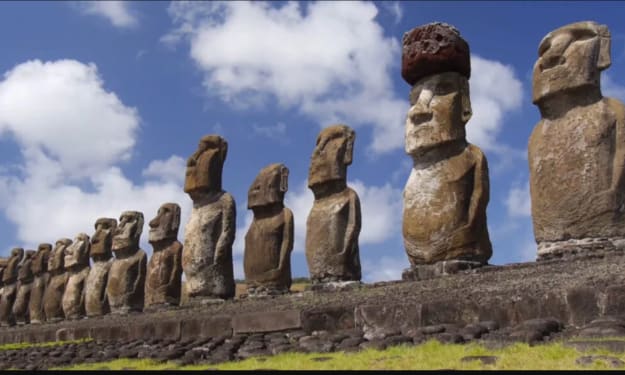
Preserving Morocco's Oasis Ecosystems: Balancing Tradition and Modernization for a Sustainable Future
The oases of Morocco are a hidden gem that many visitors to the country overlook. They offer a unique insight into the traditional way of life of the Berber people who have lived in these areas for generations. They are a testament to the ingenuity, resilience, and resourcefulness of the Berber people, and they are a true treasure of North Africa that should not be missed.
The oases are more than just patches of green in the desert - they are entire ecosystems that have evolved over time to support a diverse range of flora and fauna. The date palms that are so abundant in these areas are not just a source of food and income, but they also provide shade, shelter, and building materials. In addition, the oases are home to a variety of crops, such as figs, olives, and almonds, that have been grown using traditional methods for centuries.
The oases are also a testament to the resourcefulness of the local communities. The KHETTARAS, which are underground channels that bring water from the mountains to the oases, are a remarkable feat of engineering that date back to the Roman era. They have been maintained and expanded by generations of Berber farmers, who have created a system of interconnected channels and wells that allow them to irrigate their crops and support their families.

Visitors to the oases can explore the narrow streets of the KSARS and KASBAHS, which are fortified villages and palaces built from mud and straw. They can also experience traditional Berber hospitality by staying in a RIAD or guesthouse and sampling local cuisine, such as TAGINES, couscous, and mint tea.
In recent years, there has been a growing interest in ecotourism in the oases, with initiatives that aim to preserve the natural and cultural heritage of these areas. By supporting sustainable tourism, visitors can help to ensure that the oases continue to thrive for generations to come.
A Glimpse into Morocco's Past on the oases

The oases of Morocco offer a fascinating glimpse into the country's past, present, and future. With their unique blend of history, culture, and natural beauty, they are sure to continue to captivate visitors for years to come. Morocco is home to over 1,000 oases, each with its own unique character and history. Some, like the DRAA Valley, are vast expanses of date palms stretching over 200km through the desert. Others, like the TODRA Gorge, are narrow canyons where the river has carved its way through the rock, creating a lush oasis in the middle of the barren landscape.
One of the most impressive things about the oases is the way they have adapted to the harsh desert climate. The KHETTARAS, for example, are an ingenious system of underground tunnels and wells that tap into the water table and bring it to the surface. These tunnels can be up to 30km long and are still in use today, providing water to irrigate the crops that sustain the local communities.

The oases are also home to a rich variety of flora and fauna. In addition to date palms, you can find figs, pomegranates, and citrus trees growing in the oases. These provide shade and food for a range of animals, from birds and lizards to foxes and hyenas. The oases are also an important stopover point for migratory birds, making them a paradise for birdwatchers.
In recent years, there has been a growing interest in ecotourism in the oases. Visitors can explore the narrow streets of the KSARS and KASBAHS, sample local cuisine, and learn about traditional crafts like weaving and pottery. They can also hike or bike through the palm groves and visit the many natural and cultural sites in the area.

A Window into Morocco's Future on the oases
The oases of Morocco are not just relics of the past, but also a living, breathing part of the country's present and future. They offer a glimpse into the rich history and culture of Morocco, while also providing a valuable source of sustenance and shelter for those who call them home. By embracing sustainable practices and finding a way to balance tradition with modernization, we can ensure that these precious oases continue to thrive for generations to come.
As the world changes, the oases of Morocco must adapt to meet the new challenges that arise. With environmental concerns at the forefront of everyone's mind, many oases are turning towards sustainable practices in order to preserve their delicate ecosystems

Efforts are being made to reduce water consumption, increase the use of renewable energy sources, and promote organic farming practices. Some oases are even exploring the use of eco-friendly materials for their buildings and infrastructure.
Despite these efforts, however, the oases are not immune to the effects of climate change. Rising temperatures, droughts, and desertification are threatening the very existence of these fragile ecosystems. The traditional irrigation systems that once sustained the oases are under threat, and new methods must be found to ensure their survival.
Furthermore, as Morocco continues to develop and modernize, many oases are facing encroachment from urbanization and industrialization. The challenge for the future is to find a way to balance the needs of the present with the preservation of the past.
The Magic of Morocco's Oases
Morocco is a land of contrasts in terms of its diverse nature, valleys, mountains and desert, in addition to the sea and ocean., with its vibrant cities, rugged mountains, and vast deserts. But tucked away in between these stark landscapes are the country's oases - verdant havens of palm trees, fruit orchards, and tranquil pools of water. These magical places have been a lifeline for the people of Morocco for centuries, providing a source of water, shade, and sustenance in the harsh desert climate.

The oases of Morocco are not just beautiful, they are also steeped in history. They were once thriving centers of trade, religion, and agriculture, attracting merchants, scholars, and pilgrims from across the region.
The Berber people, who have lived in Morocco for thousands of years, are the guardians of this heritage. They have built fortified villages and palaces out of mud, straw, and wood, using techniques passed down from generation to generation.

Visitors can now explore the oases on foot, by bike, or even by hot-air balloon. They can learn about the traditional farming methods used by the locals, sample the delicious dates, figs, and almonds grown in the oases, or simply relax in the shade of a palm tree and soak in the serene atmosphere.
However, the oases of Morocco are not without their challenges. Climate change and overexploitation of resources pose a threat to these fragile ecosystems. As modernization encroaches on the traditional way of life, there is a need to strike a balance between preserving the past and embracing the future.
The oases of Morocco are a hidden gem that deserve more attention. They are not only a source of beauty and tranquility, but also a symbol of human resilience and ingenuity. Whether you are a history buff, a nature lover, or a cultural enthusiast, a visit to one of Morocco's oases is sure to be a memorable experience.
About the Creator
Decosmart
Architecture is the art and science of designing and constructing buildings, structures, and other physical environments that are aesthetically appealing, functional, and safe for human use.






Comments
There are no comments for this story
Be the first to respond and start the conversation.